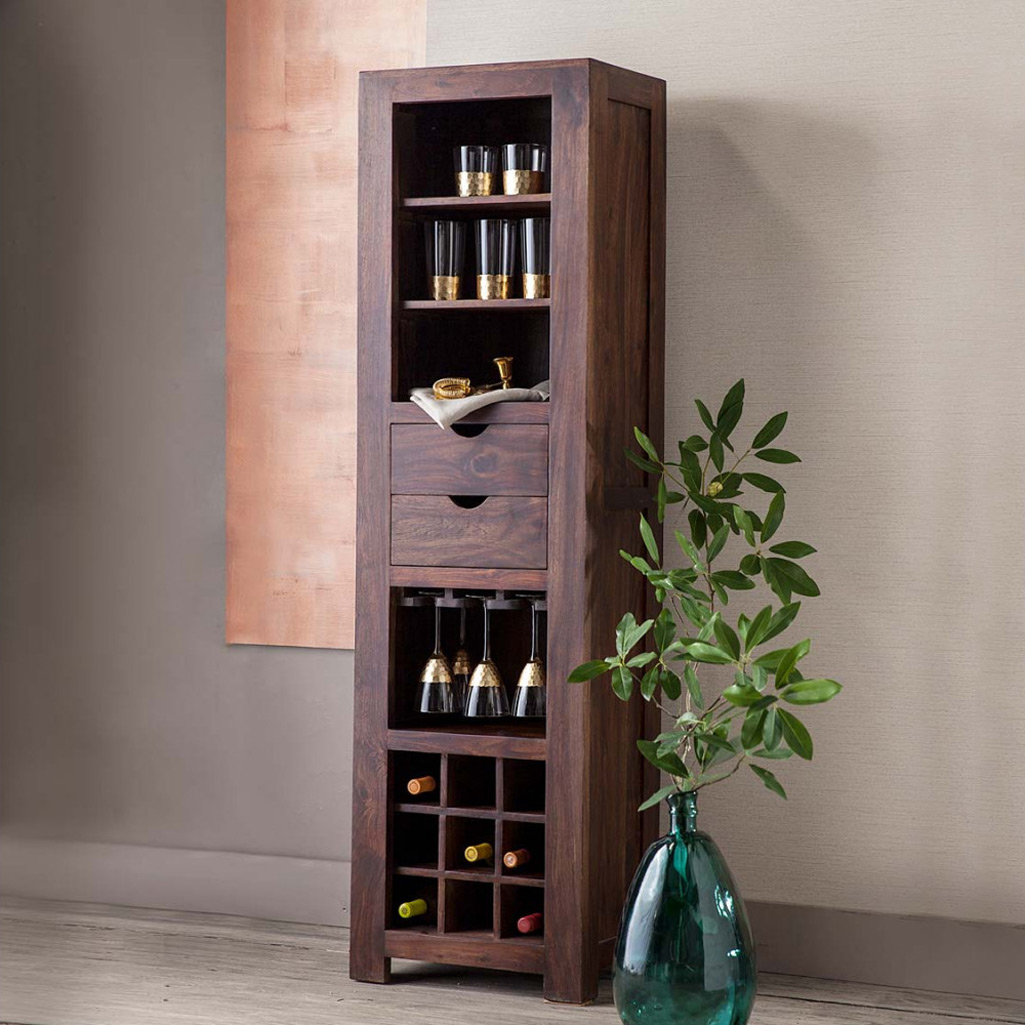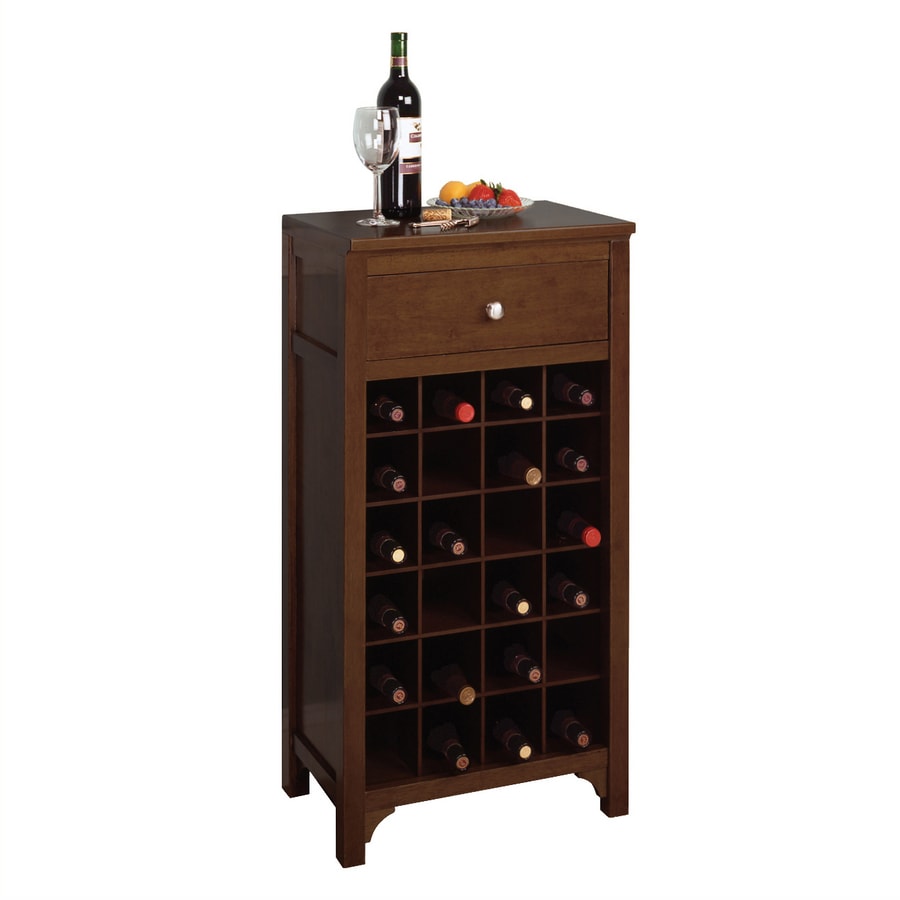The Allure of Dark Wood Wine Cabinets

Dark wood wine cabinets exude an aura of timeless elegance and sophistication, seamlessly blending with any interior design style. Their rich color and intricate grain patterns create a sense of warmth, inviting a feeling of luxury and refinement. This enduring appeal stems from the inherent qualities of dark wood, which possess a natural beauty that enhances the ambiance of any space.
The Aesthetic Appeal of Dark Wood
The rich, deep tones of dark wood, such as mahogany, walnut, and cherry, create a sense of depth and visual interest. These colors evoke feelings of warmth, comfort, and sophistication, adding a touch of grandeur to any room. The intricate grain patterns, unique to each wood species, add a layer of visual complexity, creating a captivating focal point in the space.
The use of dark wood in wine cabinets is a testament to the enduring appeal of this material. Its timeless elegance and inherent beauty create a sense of luxury and sophistication that complements the refined nature of wine.
Popular Dark Wood Species for Wine Cabinets, Dark wood wine cabinet
The choice of dark wood species for wine cabinets is often influenced by personal preferences and the desired aesthetic. Here are some popular choices, each with unique characteristics that make them suitable for different styles:
- Mahogany: Known for its rich, reddish-brown color and lustrous finish, mahogany is a classic choice for wine cabinets. Its durability and resistance to moisture make it ideal for storing valuable wine collections.
- Walnut: With its distinctive dark brown color and intricate grain patterns, walnut adds a touch of rustic elegance to wine cabinets. Its durability and rich color make it a popular choice for traditional and contemporary styles.
- Cherry: Cherry wood is prized for its warm reddish-brown color and fine grain. It ages beautifully, developing a rich patina over time. Cherry wine cabinets often have a classic, elegant look.
- Ebony: Ebony is a highly prized hardwood known for its deep black color and smooth, dense texture. Its rarity and striking appearance make it a luxurious choice for wine cabinets, adding a touch of exoticism.
Functionality and Features

Dark wood wine cabinets are more than just aesthetically pleasing storage solutions. They are meticulously designed to preserve your precious wine collection, ensuring optimal conditions for aging and enjoyment. This section delves into the functional aspects of these cabinets, exploring their storage capacity, temperature and humidity control, and security features. We will also compare and contrast different types of cabinet doors, highlighting their aesthetic appeal and practical implications.
Storage Capacity
The storage capacity of a wine cabinet is a crucial consideration, as it determines how many bottles you can accommodate. The number of bottles a cabinet can hold varies significantly depending on its size and configuration. Smaller cabinets may hold a few dozen bottles, while larger models can accommodate hundreds. The internal layout also plays a role. Cabinets with adjustable shelves and racks offer greater flexibility in accommodating different bottle sizes and shapes.
Temperature Control
Maintaining a consistent temperature is essential for wine preservation. Wine cabinets are equipped with thermoelectric or compressor-based cooling systems to regulate the internal temperature. Thermoelectric systems are generally quieter and more energy-efficient, while compressor-based systems offer faster cooling and more precise temperature control. The ideal temperature range for storing wine is typically between 50°F and 55°F (10°C and 13°C), though specific recommendations vary depending on the type of wine.
Humidity Regulation
Humidity is another critical factor in wine preservation. Excessive humidity can lead to mold growth, while low humidity can cause the wine to dry out. Wine cabinets often feature humidity control systems to maintain optimal humidity levels, typically between 50% and 70%. Some models employ humidifiers to increase humidity, while others use dehumidifiers to reduce it.
Security Features
Wine cabinets may include security features to protect your valuable collection from theft or unauthorized access. These features can include:
- Locking doors: Most wine cabinets have locking doors to prevent unauthorized access. These locks can range from simple key locks to more sophisticated electronic locks with keypads or fingerprint scanners.
- Alarms: Some models include alarms that trigger when the door is opened or if the internal temperature or humidity levels fluctuate outside the set parameters.
- Interior lighting: Interior lighting not only illuminates the wine collection but can also act as a deterrent to theft, as it makes the contents visible from outside.
Types of Wine Cabinet Doors
The choice of door type for a wine cabinet is a matter of both aesthetics and practicality. Here’s a comparison of the most common door types:
Glass Doors
- Aesthetic appeal: Glass doors provide a clear view of the wine collection, showcasing the bottles and labels.
- Practical considerations: Glass doors can be susceptible to UV damage, which can affect the quality of the wine over time. It is crucial to choose cabinets with UV-resistant glass or to place them in areas that are not exposed to direct sunlight.
Solid Wood Doors
- Aesthetic appeal: Solid wood doors offer a classic and elegant look, complementing the dark wood finish of the cabinet.
- Practical considerations: Solid wood doors provide better protection from UV damage than glass doors. However, they obscure the view of the wine collection.
Sliding Doors
- Aesthetic appeal: Sliding doors can be a space-saving option, especially in smaller kitchens or dining areas. They can also add a modern touch to the design.
- Practical considerations: Sliding doors may not provide as much protection from UV damage as solid wood doors. They can also be more prone to scratches or damage over time.
Wine Cabinet Configurations
Wine cabinets come in various configurations, each offering different features and benefits. Here’s a table summarizing the key characteristics of three common configurations:
| Configuration | Features | Benefits |
|---|---|---|
| Single-Temperature Cabinets | Maintain a single temperature throughout the cabinet. | Ideal for storing wines that require similar temperature conditions, such as reds or whites. More affordable than dual-zone cabinets. |
| Dual-Zone Cabinets | Offer separate temperature zones for different types of wine. | Allow you to store reds and whites at their optimal temperatures simultaneously. Provide greater flexibility in storing a wider variety of wines. |
| Wine Cellars | Large, dedicated spaces designed specifically for wine storage. | Offer extensive storage capacity and the ability to create custom temperature and humidity control systems. Can enhance the value of a home. |
Integrating Dark Wood Wine Cabinets into Interior Design

Dark wood wine cabinets, with their rich tones and timeless appeal, can seamlessly blend into various interior design styles, adding a touch of elegance and sophistication. Whether your home embraces a modern, traditional, farmhouse, or contemporary aesthetic, these cabinets offer a versatile solution for storing and showcasing your wine collection while enhancing the overall design.
Matching Cabinet Finishes to Interior Styles
The color and finish of a dark wood wine cabinet play a crucial role in determining its compatibility with different interior design styles. Here’s a breakdown of how to choose the right cabinet finish for each style:
- Modern: Opt for a sleek, minimalist cabinet with a dark wood stain that complements the clean lines and neutral color palette of modern interiors. A satin or semi-gloss finish can further enhance the modern aesthetic.
- Traditional: Traditional interiors often feature warm, rich colors and intricate details. A dark wood cabinet with a high-gloss finish and ornate carvings can beautifully complement the classic elegance of traditional spaces. Consider a mahogany or walnut stain for a timeless look.
- Farmhouse: Farmhouse interiors embrace rustic charm and natural elements. Choose a dark wood cabinet with a distressed or weathered finish, reminiscent of reclaimed wood. A warm, honey-toned stain can further enhance the farmhouse aesthetic.
- Contemporary: Contemporary interiors often feature bold colors and geometric patterns. A dark wood cabinet with a matte finish and clean lines can provide a grounding element and create a sense of sophistication. Consider a deep ebony or espresso stain for a striking contrast against lighter walls and furniture.
Visualizing Dark Wood Wine Cabinets in Different Interior Settings
To illustrate the versatility of dark wood wine cabinets, consider these visual representations:
- Modern Living Room: Imagine a sleek, minimalist dark wood wine cabinet with a satin finish, positioned against a backdrop of white walls and contemporary furniture. The cabinet’s dark wood tones create a grounding element, while its clean lines complement the modern aesthetic.
- Traditional Dining Room: Picture a dark wood wine cabinet with a high-gloss finish and intricate carvings, placed in a traditional dining room adorned with warm, rich colors and ornate details. The cabinet’s elegant design enhances the classic charm of the space.
- Farmhouse Kitchen: Envision a dark wood wine cabinet with a distressed finish, positioned in a farmhouse kitchen featuring rustic accents and natural elements. The cabinet’s weathered look blends seamlessly with the farmhouse aesthetic, while its warm, honey-toned stain adds a touch of warmth.
- Contemporary Bedroom: Consider a dark wood wine cabinet with a matte finish and clean lines, placed in a contemporary bedroom featuring bold colors and geometric patterns. The cabinet’s dark wood tones create a striking contrast against the lighter walls and furniture, adding a touch of sophistication.
A dark wood wine cabinet can serve as a striking focal point in a bedroom, particularly when incorporated into a color scheme that complements its rich tones. For a sophisticated and modern aesthetic, consider drawing inspiration from black, grey, and silver bedroom ideas , where the cabinet’s deep hues can provide a grounding element amidst the cool, minimalist palette.
This approach creates a sense of visual balance and allows the wine cabinet to stand out as a statement piece within the overall design.
The dark wood of a wine cabinet, with its rich hues and natural grain, can serve as a grounding element in a space. To complement this grounding effect, consider incorporating a color scheme inspired by black and white and yellow bedroom ideas , where the bright yellow accents can bring vibrancy and contrast to the darker wood tones.
The result is a sophisticated and balanced aesthetic, allowing the wine cabinet to act as a focal point within the space.